“We need to look upon what kind of company are we and how are we attracting talent in the views of these tensions as environment, aging population, increasing technology adoption etc. And tensions, as you know, are usually a force of opportunities.” – Anne Årneby
“If you’re looking only for culture fit in recruitment candidates, then you will not get diversity”- Jakob Stengel
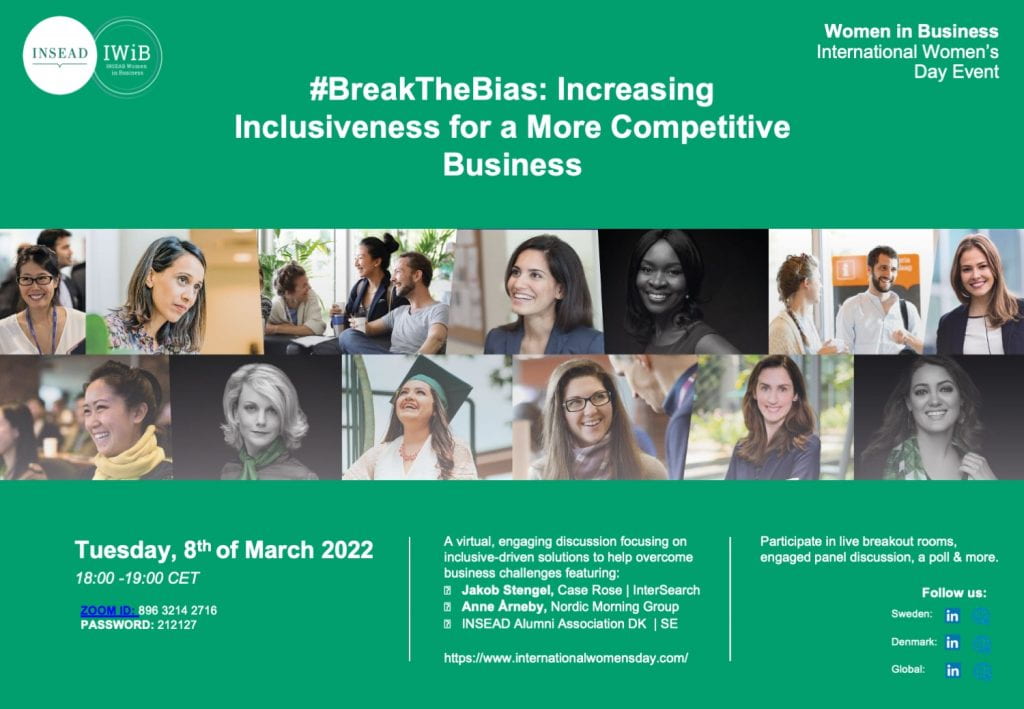
Many businesses and executive boards are experiencing increased competition for talent, which is hampering company growth. Leaders are looking to diversify their teams to increase competitiveness and increase business value. But how do we break the bias to increase diversity in organizations? The INSEAD Alumni Association Sweden and Denmark organized an event to answer just that; Jakob Stengel, CEO & Managing Partner at Case Rose InterSearch and Global Head of Board Practice at InterSearch, and Anne Årneby, Ex-CEO Nordic Morning Group, Board Member Svenska Spel & Rolling Optics, gave their current perspectives on this business imperative topic on International Women’s Day.
To start off the event, our Women in Business Association Leads, Jennifer Lipes and Tamara Fiona Wennecke, set the scene regarding the diversity and inclusion figures in global and Nordic businesses, and particularly how it relates to being an attractive employer for top-talent.
The following slide was shown highlighting most importantly how more businesses need to see that diversity & inclusion is not just a moral obligation, but that it drives business value.
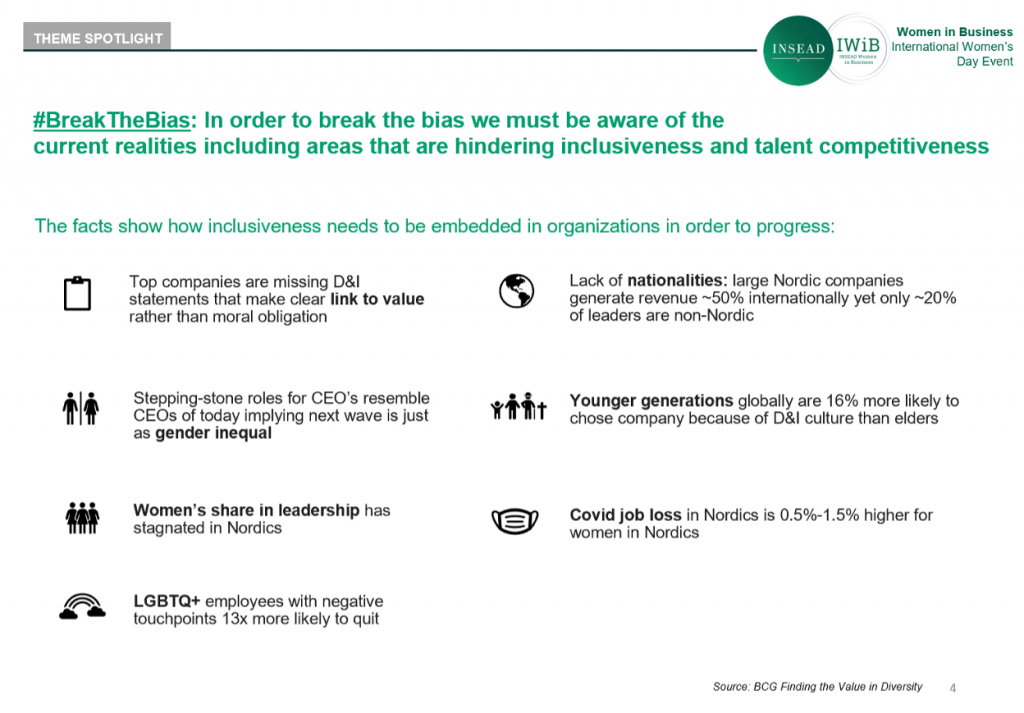
Zooming in particularly on the lack of females in senior positions and on boards, Tamara called out specifically the fact that Denmark is the only Nordic country not in top 10 according to the Global Gender Gap Report, and has remained stagnate the last 5 years.
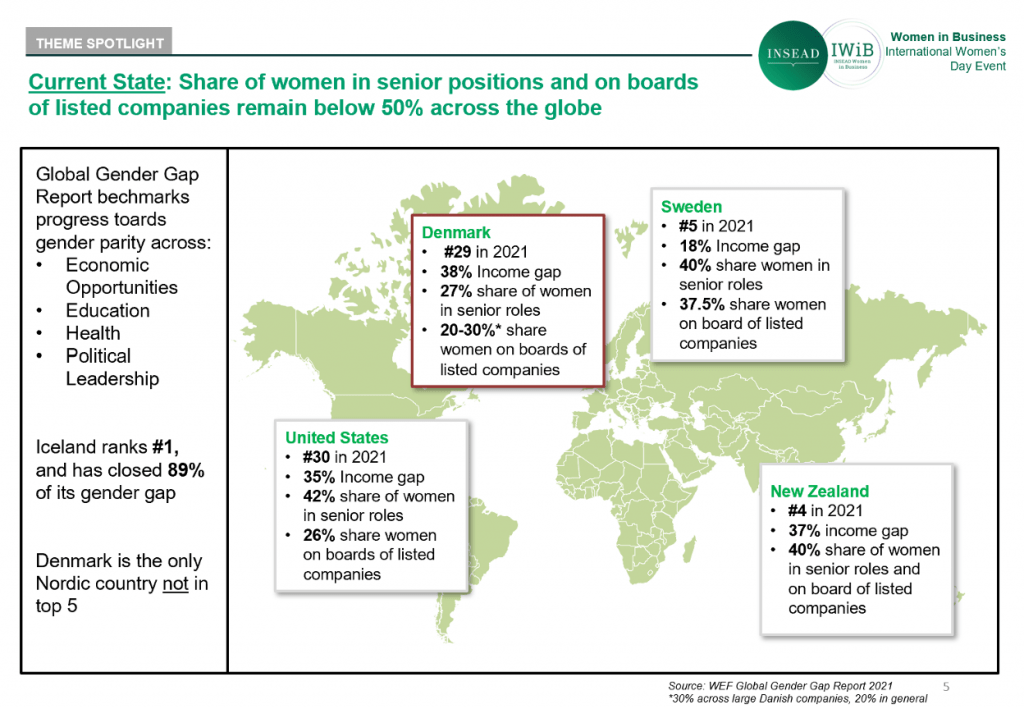
Anne Årneby then took a zoomed-out approach to show us how diversity plays a role in terms of the five big megatrends impacting our future, showcasing Sitra’s Big Picture of Megatrends. The important call outs were also the tensions between the megatrends, such as how new communities are coinciding with relational power and the diversifying population. She stressed that sometimes these tensions can serve as a force of opportunity, and that companies are increasing looking to build partnerships or joint ecosystems in the future.
“We have had centralized decisions, mainly over the last 150 or 200 years. But now we can see that we need a broader engagement when it comes to taking on business challenges.”- Anne Årneby
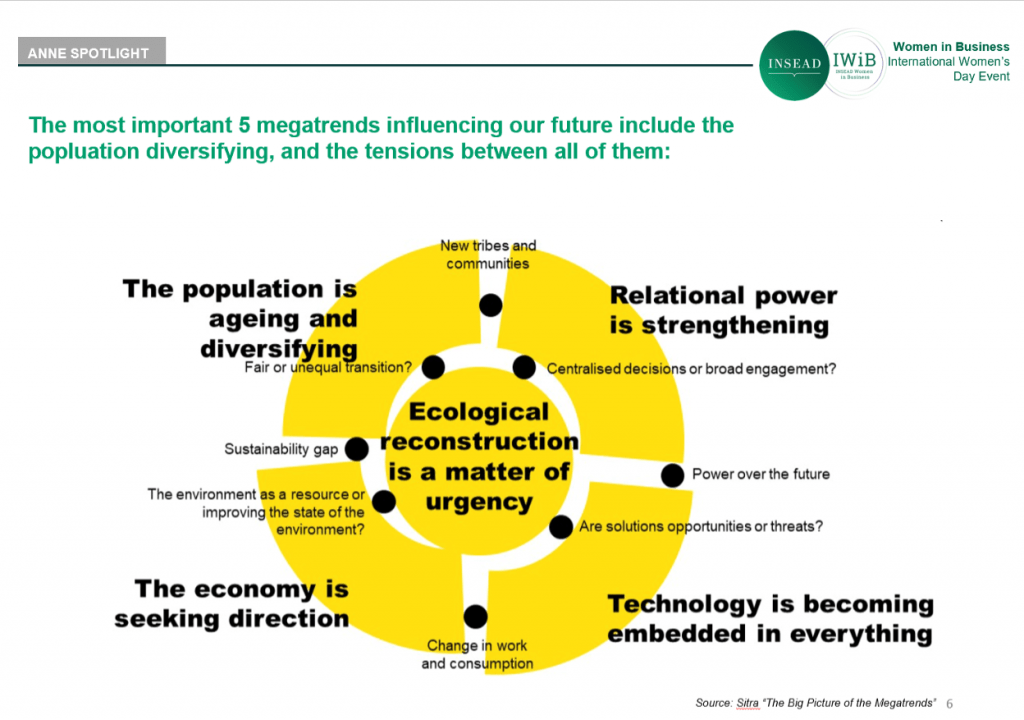
We then moved onto Jakob who zoomed into a diversity matrix showing the practical tools, steps or actions to take to improve inclusion and retain talent, depending on how formal versus cultural you look on the spectrum. One important call out that was made was in regards to KPIs (Key Performance Indicators). Jakob stressed that if you’re looking for diverse profiles, you should not use the KPIs you’ve used historically, that companies need to think more creatively regarding performance matrixes and bonuses or other company policies, or utilize external legislation to move the dial. He also sparked discussion by describing how if companies are looking for a cultural fit, they will not get diversity, but instead “companies should be looking for cultural add not cultural fit.”
“If you are really looking for diverse profiles when recruiting, you shouldn’t use the KPI sets that you have used historically, because you will be getting what you what you’ve always gotten.” – Jakob Stengel
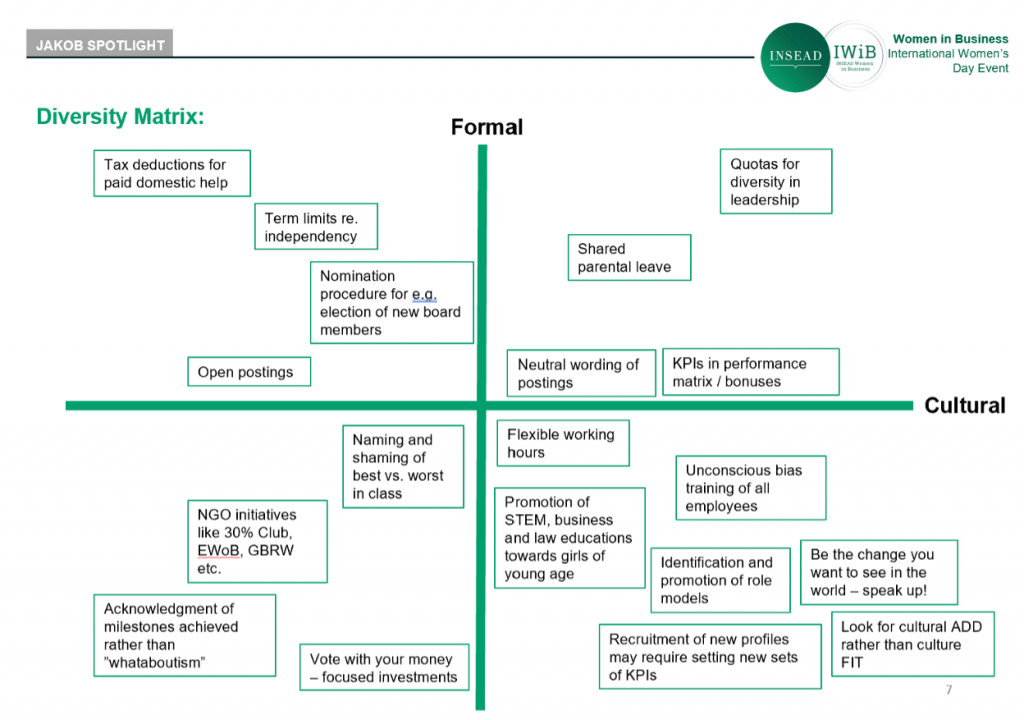
To read more of the material or hear the live discussion you can find the full slides >> here and the recording will be added >> here.
Special thanks to Andrew Kristensen for opening and closing remarks and Liselotte Hägertz Engstam and Andrea Wilczynski for their support.
Sources:
BCG “Finding the Value in Diversity”
WEF “Global Gender Gap Report 2021”
Sitra “The Big Picture of the Megatrends”
